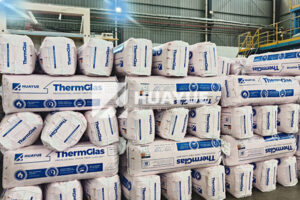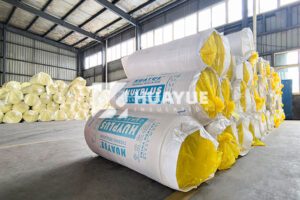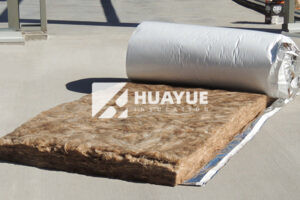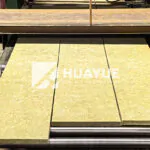Does fiberglass insulation hold heat?
Does fiberglass insulation hold heat?
Fiberglass insulation can stop heat loss, but does it really hold heat or just slow it down? If you have ever wondered what makes buildings warm in winter, here is the answer.
Fiberglass insulation does not "hold" heat in the way a battery holds power. Instead, it acts as a barrier, reducing the amount of heat that escapes from inside to outside. This keeps rooms warmer for longer and helps save energy.
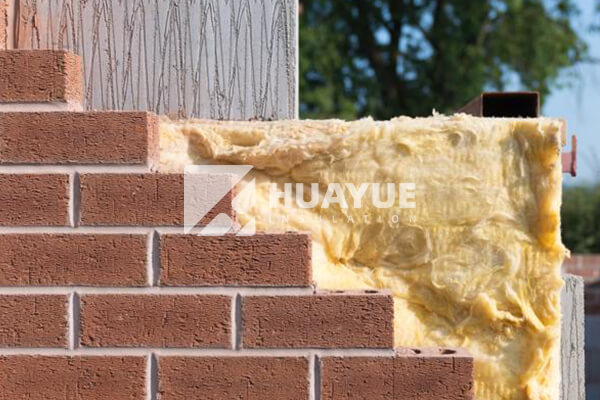
When I first started working with insulation, I realized most people think it works like a heater. They imagine fiberglass releases heat slowly. In truth, it only traps air and slows down how fast heat moves. High-quality fiberglass, like the glass wool we produce at HUAYUE, locks in air so it cannot flow, making it harder for heat to escape. This simple idea creates comfort and saves on bills. Let’s look deeper into what makes fiberglass so good at keeping heat in.
Does fiberglass insulation keep heat in?
You might wonder if fiberglass insulation actually keeps heat inside or if it simply traps it for a short time.
Fiberglass insulation is designed to keep heat from leaving a space by limiting heat transfer. This means it helps keep warm air in during winter and blocks hot air in summer.
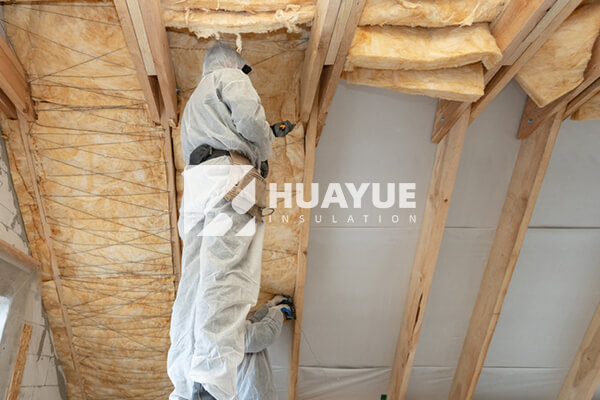
When I visited a client in northern Europe, he was having trouble keeping his chemical tank at the right temperature through changing seasons. After replacing old insulation with our high-quality glass wool, he saw immediate results: his tank maintained the right warmth much longer, even when outside was freezing cold. The secret is how fiberglass creates a maze of tiny glass fibers that air cannot move through. Air is a poor conductor of heat. If you stop air from flowing, you stop heat from going anywhere fast.
How Fiberglass Insulation Traps Heat
Here’s how fiberglass slows heat’s escape:
| Feature | How it Works | Result |
|---|---|---|
| Fine Glass Fibers | Air is trapped between fibers | Airflow (and thus heat flow) stops |
| Low Thermal Conductivity | Glass does not conduct heat well | Heat passes through slowly |
| Thick Batts and Rolls | More layers mean longer path for heat | Even less heat escapes |
| Minimal Impurities | Clean fibers, no shortcuts for air | More effective insulation |
At HUAYUE, our glass wool uses only clean glass that we process ourselves. We wash and dry it several times before melting. This keeps impurities out and means our insulation has fewer "slag balls"—those hard, scratchy bits that other products sometimes have. Finer, longer fibers in our insulation trap air better and do not itch when handled.
What is the temperature range for fiberglass insulation?
Can fiberglass handle extreme temperatures, or does it break down when things get really hot or really cold?
Fiberglass insulation typically works well from -200°C to 540°C (-328°F to 1004°F). It does not melt or shrink within these temperatures and keeps its insulating power.
I remember the specs needed for a cryogenic tank project in Scandinavia. The client needed insulation that would not crumble at very low or very high temps. Our glass wool stood out because it never got brittle in the cold or lost shape when things heated up. This property matters if you use insulation on tanks that hold liquid gases or hot process chemicals.
Key Temperature Characteristics of Fiberglass Insulation
| Application | Minimum Service Temp | Maximum Service Temp | Notes |
|---|---|---|---|
| Cryogenic Tanks | -200°C (-328°F) | No cracking or shrinkage | |
| Building Insulation | -40°C (-40°F) | 250°C (482°F) | Keeps shape, no odor |
| Industrial Processes | 540°C (1004°F) | No melting or burning |
Our HUAYUE glass wool remains stable across this wide range. There is no sagging, no melting, and no loss in insulating value. This reliability gives engineers like Hans Müller confidence when choosing materials for challenging environments.
What is the heat capacity of fiberglass insulation?
Is fiberglass good at storing heat, or does it just stop it from moving?
The heat capacity of fiberglass insulation is around 0.84 J/g·K. This means it does not store or release heat quickly. Its main job is to stop heat flow, not to store it.
When I get this question on industrial projects, I explain: the main advantage is not in how much heat fiberglass absorbs, but in how little heat it lets through. The tiny amount of heat it stores plays almost no role in keeping a building warm.
Comparing Heat Capacity of Common Insulation Materials
| Material | Heat Capacity (J/g·K) |
|---|---|
| Fiberglass | 0.84 |
| Mineral Wool | 0.84 |
| Expanded Polystyrene (EPS) | 1.3 |
| Polyurethane Foam | 1.4 |
| Concrete | 0.88 |
As you can see, fiberglass is similar to other mineral-based insulations. It is not meant to act as a thermal mass. Instead, it provides a barrier, keeping heat on one side of a wall or tank. That is what really makes a difference for long-term energy savings.
At what temperature does fiberglass insulation catch on fire?
Is fiberglass insulation a fire risk, or does it offer good fire resistance?
Fiberglass insulation is highly fire resistant. It does not catch fire until temperatures exceed 540°C (1004°F). Even then, it does not burn; it only melts.
This topic comes up often in safety meetings. In one project, the client’s main worry was fire safety. I showed lab tests where our glass wool stayed intact when exposed to direct flame. The glass did not burn, and there was no smoke.
Fiberglass and Fire: Key Facts
| Property | Value |
|---|---|
| Ignition Point | > 540°C (1004°F) (just melts) |
| Flame Spread Index | 0 – Does not spread fire |
| Smoke Production | None (if no binder used) |
| Fire Class Rating | Meets EU, US, and China standards |
At HUAYUE, our glass wool also has a higher melting point, thanks to ultra-clean raw glass. It is a popular choice where strict fire laws apply. Most fire deaths come from smoke inhalation—glass wool’s zero-smoke profile adds another layer of safety.
What are the benefits of fiberglass insulation?
Why do so many engineers and builders pick fiberglass? What makes it special?
Fiberglass insulation offers high thermal efficiency, strong fire resistance, great soundproofing, long life, and cost savings. Clean materials and fine fibers make these benefits even better.

Once, when I explained the choice of insulation to a client managing a big chemical complex, he wanted every advantage: safety, energy savings, and low maintenance. Our glass wool delivered all this thanks to fiber purity and a clean production process.
Overview: Key Benefits of HUAYUE Glass Wool
| Benefit | How It Helps | Why It Matters |
|---|---|---|
| Superior Insulation | Traps air, reduces heat loss | Lower energy bills, keeps tanks/buildings warm |
| Fire Safety | High melting point, no smoke | Meets strict codes, safe for people |
| Acoustic Comfort | Fine fibers dampen sound | Quieter work and living space |
| Durability | No sagging, moisture-proof | Long-lasting protection |
| Health & Comfort | Less itchy, minimal dust | Easy to install, cleaner air |
| Cost Effective | More insulation per dollar | Value for budget-conscious projects |
| Appearance | More yellow, cleaner look | Preferred by designers |
Using only high-quality glass makes a clear difference. Our batts are soft, do not itch, and show a bright yellow color. They work better, last longer, and help pass safety inspections without worry.
Conclusion
Fiberglass insulation does not store heat but traps air to slow heat loss, boosts energy efficiency, and offers reliable fire and sound protection for homes and industry.
You may also be interested in:
Ready to Get Started?
Get in touch with our experts for personalized solutions tailored to your needs.
Get Free QuoteLatest Articles

Glass Wool Fire Rating: How Safe Is Your Insulation?
Dec 25, 2025
Let's Work Together
Ready to take your business to the next level? Get in touch with our team of experts and let's discuss how we can help you achieve your goals.
Get Free Solutions
